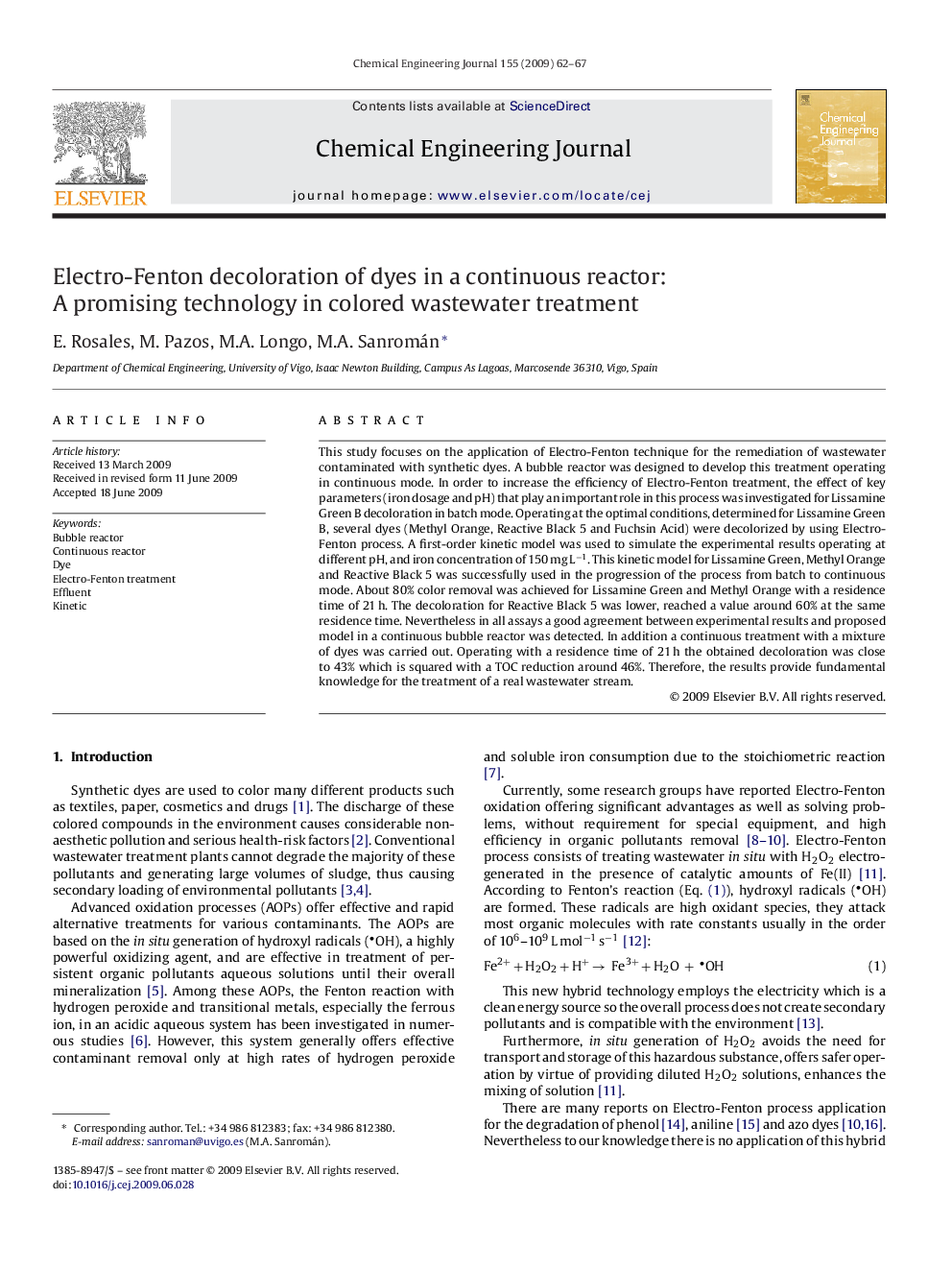| Article ID | Journal | Published Year | Pages | File Type |
|---|---|---|---|---|
| 153306 | Chemical Engineering Journal | 2009 | 6 Pages |
This study focuses on the application of Electro-Fenton technique for the remediation of wastewater contaminated with synthetic dyes. A bubble reactor was designed to develop this treatment operating in continuous mode. In order to increase the efficiency of Electro-Fenton treatment, the effect of key parameters (iron dosage and pH) that play an important role in this process was investigated for Lissamine Green B decoloration in batch mode. Operating at the optimal conditions, determined for Lissamine Green B, several dyes (Methyl Orange, Reactive Black 5 and Fuchsin Acid) were decolorized by using Electro-Fenton process. A first-order kinetic model was used to simulate the experimental results operating at different pH, and iron concentration of 150 mg L−1. This kinetic model for Lissamine Green, Methyl Orange and Reactive Black 5 was successfully used in the progression of the process from batch to continuous mode. About 80% color removal was achieved for Lissamine Green and Methyl Orange with a residence time of 21 h. The decoloration for Reactive Black 5 was lower, reached a value around 60% at the same residence time. Nevertheless in all assays a good agreement between experimental results and proposed model in a continuous bubble reactor was detected. In addition a continuous treatment with a mixture of dyes was carried out. Operating with a residence time of 21 h the obtained decoloration was close to 43% which is squared with a TOC reduction around 46%. Therefore, the results provide fundamental knowledge for the treatment of a real wastewater stream.
